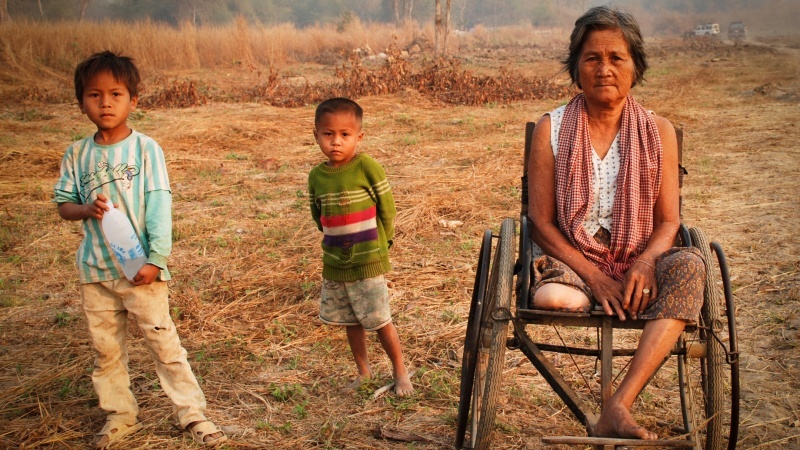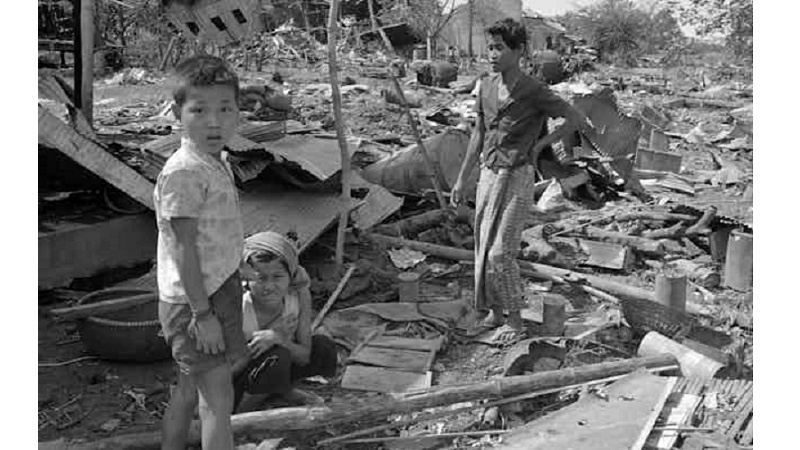Cambodians are still afraid of dark soil/ Disaster that US brought to Cambodia + Photos
-

Female Cambodian farmer who lost her leg due to a US land mine explosion
Pars Today- During the US bombing of Cambodia, an estimated 500,000 tons of ordnance dropped on more than 113,000 targets in Cambodia.
While the US was involved in the bloody Vietnam War, on April 30, 1970, launched air and ground invasions of Vietnam’s neighbor, Cambodia, and the US troops occupied this southeastern Asian country.
Then US President, Richard Nixon said the US goal of occupying Cambodia was getting enough time for the withdrawal of American troops from Vietnam.
Though Cambodia was Vietnam’s neighbor, it had previously declared its neutrality in the US- Vietnam conflict.
In justifying the US occupation of Cambodia, Nixon said: “If, in various tests, the US, as the most powerful country in the world, acts like a poor ghoul, anarchists, nationalists and communists will rule the nations of the world and different societies, and in this way, the interests of the US and the capitalist world will be endangered".

A hidden war
Henry Kissinger as the chief architect of this project, along with others in the White House, tried to keep the campaign from the public for as long as they could. With the U.S. government keeping the bombings secret at the time, the release of data and documentation of these crimes were prohibited.
The US military operations resulted in the direct death of hundreds of thousands of Cambodians. The number of deaths has been estimated up to one million people.
Destroying the social and political structure and the control of the Khmer Rouge
The US bombing campaign of Cambodia designed by Kissinger made Cambodia's social and political structure unstable and vulnerable. In just one part of the country, more than a million villagers turned into refugees, fleeing the American bombs.
Kissinger’s bombing campaign contributed to a political vacuum that the Khmer Rouge was able to seize power. The Khmer Rouge committed unimaginable crimes against the Cambodian people. According to estimates, about a quarter of the country’s population (between 1.6 and 3 million) were killed through executions, forced labor and starvation.

Farmers are still afraid
The scars from that period are still felt in Cambodia today. Recent research even points to the economic impact Kissinger’s bombs continue to have on farmers, who avoid darker soil over fears that it hides unexploded ordnance.
Massacre of protesting academics
The occupation of Cambodia increased the waves of American public opposition to the belligerence of the White House leaders.
The intensity of the protests in the US was such that the National Guard of the United States shot at the protesting students at the universities. The massacre of American students at Ohio University was a clear example.

The end of occupation
As the protests increased, the US Congress passed a bill forcing Nixon to withdraw the US military forces from Cambodia by July 1970. The Americans finally left Cambodia later that year. After withdrawing from Cambodia, the US settled its puppet government in the country; However, after the US defeat in Vietnam, Cambodia's military government was also overthrown.
It is interesting that just five years after the US military campaign in Cambodia (April 30, 1975), they were defeated by Vietnam.
Sources:
Sophal Ear. 2023. Henry Kissinger’s bombing campaign likely killed hundreds of thousands of Cambodians − and set path for the ravages of the Khmer Rouge. The conversation.
Rasekhoon. The US military invasion of Cambodia in south Asia (1970)
AE/UR


